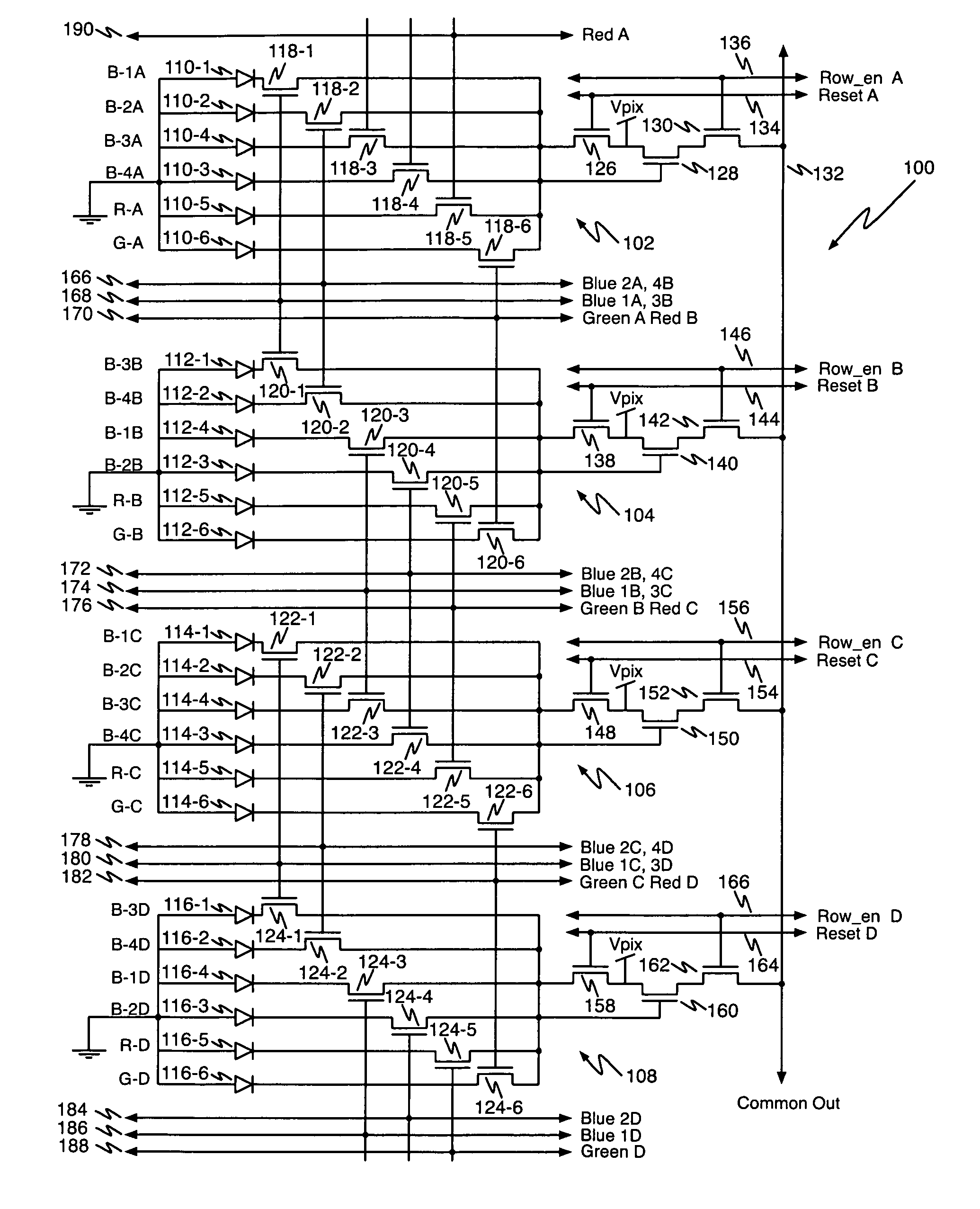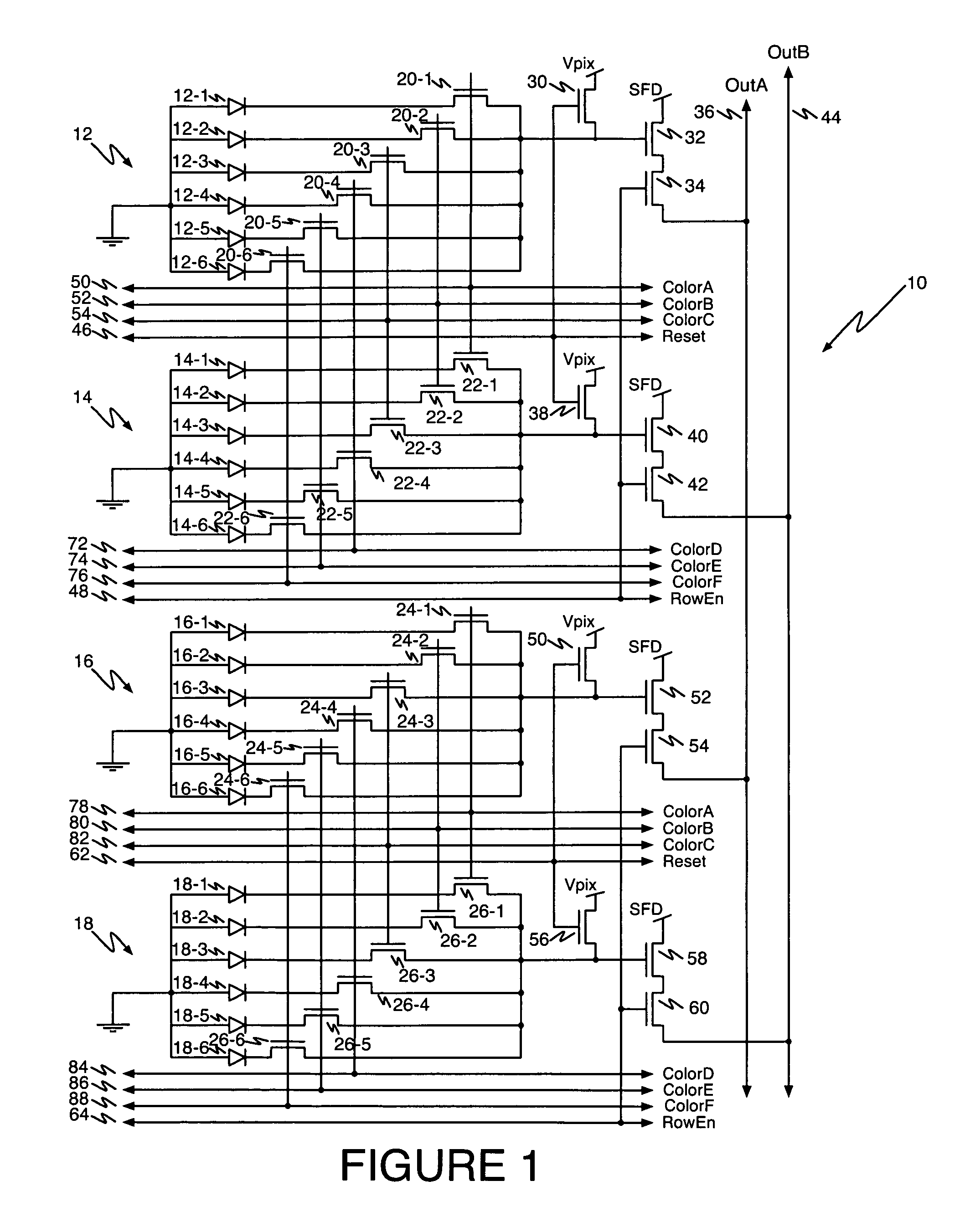Multi-color CMOS pixel sensor with shared row wiring and dual output lines
a pixel sensor and row wiring technology, applied in the field of multi-color cmos pixel sensors, can solve the problems of complicated problem, large number of wires, and complex problem, and achieve the effect of reducing the number of required wires through the pixel array and reducing the number of color select signals
- Summary
- Abstract
- Description
- Claims
- Application Information
AI Technical Summary
Benefits of technology
Problems solved by technology
Method used
Image
Examples
Embodiment Construction
[0016]Persons of ordinary skill in the art will realize that the following description of the present invention is illustrative only and not in any way limiting. Other embodiments of the invention will readily suggest themselves to such skilled persons.
[0017]Referring first to FIG. 1, a schematic diagram shows a portion of an array 10 of multi-color CMOS pixel sensors according to the present invention comprising a part of a single column of the array containing four multi-color CMOS pixel sensors 12, 14, 16, and 18. Each pixel sensor includes six photodiodes identified in FIG. 1 at reference numerals 12-1 through 12-6, 14-1 through 14-6, 16-1 through 16-6, and 18-1 through 18-6. The anode of each photodiode is coupled to ground.
[0018]The cathode of each photodiode is separately coupled to a source / drain terminal of an n-channel select transistor to form a photocharge collection node. In pixel sensor 12, transistors 20-1 through 20-6 are the select transistors for photodiodes 12-1 t...
PUM
 Login to View More
Login to View More Abstract
Description
Claims
Application Information
 Login to View More
Login to View More - R&D
- Intellectual Property
- Life Sciences
- Materials
- Tech Scout
- Unparalleled Data Quality
- Higher Quality Content
- 60% Fewer Hallucinations
Browse by: Latest US Patents, China's latest patents, Technical Efficacy Thesaurus, Application Domain, Technology Topic, Popular Technical Reports.
© 2025 PatSnap. All rights reserved.Legal|Privacy policy|Modern Slavery Act Transparency Statement|Sitemap|About US| Contact US: help@patsnap.com



